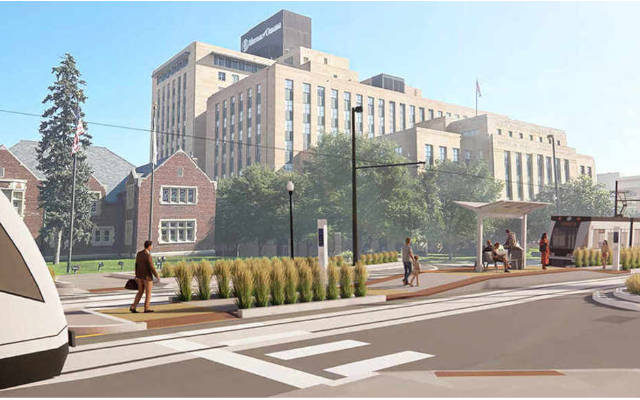Building an Antifragile Omaha: Rethinking Resilience in the Heartland

Future trolley station adjacent to Mutual of Omaha
By EVWorld.com Si Editorial Team
Omaha, Nebraska is not a city in crisis. It's not buckling under the weight of megacity dysfunction, nor is it scrambling to industrialize like a frontier economy. But that's precisely what makes it interesting. In the language of Black Swan author Nassim Nicholas Taleb, Omaha is perched somewhere on the saturation curve—a place where comfort and stability risk calcifying into fragility. The challenge isn't survival; it's evolution. And the opportunity lies in embracing antifragility: the idea that systems should not just withstand shocks, but grow stronger because of them.
Taleb’s framework, laid out in Antifragile, is a kind of philosophical toolkit for cities. It favors decentralization over central planning, redundancy over efficiency, and organic growth over engineered perfection. Omaha, with its mix of urban ambition and suburban sprawl, is uniquely positioned to apply these ideas—not by mimicking coastal innovation hubs, but by reimagining its own assets.
Take the downtown trolley system, for example. It’s one of the most hotly debated infrastructure projects in recent memory, and for good reason. Critics see it as a vanity project, a nostalgic nod to streetcar cities of the past. But its planned route—from the employment core of downtown to the University of Nebraska Medical Center—suggests something more strategic. If Omaha treats the trolley not as a lifestyle ornament but as a spine for resilient urban mobility, it could become a cornerstone of antifragile design. It’s not just about moving people; it’s about connecting economic nodes, reducing car dependence, and creating a transit corridor that can absorb and adapt to future shocks—fuel shortages, climate disruptions, even demographic shifts.
But antifragility isn’t just built downtown. It’s also hiding in the sprawl.
Suburban Omaha, often dismissed as the epitome of fragility—low-density, car-dependent, and resource-intensive—actually holds untapped potential. Taleb would argue that fragility comes from rigidity, not geography. And sprawl, for all its inefficiencies, is flexible. It has space. It has redundancy. It has the raw ingredients for decentralized energy systems, local food production, and adaptive housing models. Imagine a neighborhood where solar panels power microgrids, where backyard gardens feed local co-ops, and where garages become workshops or accessory dwelling units. That’s not just survivalism—it’s a blueprint for a city that thrives under pressure.
The trick is to stop treating sprawl as a problem to be solved and start treating it as a landscape to be reprogrammed. Omaha doesn’t need to bulldoze its suburbs to become resilient. It needs to layer in systems that make those neighborhoods more self-sufficient, more connected, and more responsive to change. That means investing in mobility options beyond the car—bike lanes, yes, but also e-bike networks, autonomous shuttles, and flexible bus routes that stitch together the metro’s patchwork geography. It means rethinking zoning to allow for mixed-use pockets, pop-up markets, and community hubs that reduce the need for long commutes and centralized services.
Taleb’s ideas aren’t anti-modern. They’re anti-fragile. And Omaha, with its manageable scale, civic pragmatism, and Midwestern grit, is a perfect testbed. The city doesn’t need to chase the next tech utopia or greenwash its way into relevance. It needs to build systems that work when things go wrong—and get better because of it.
That’s the promise of antifragile Omaha. A city that doesn’t just endure the future, but bends it to its advantage.
Original Backlink
Views: 308
Articles featured here are generated by supervised Synthetic Intelligence (AKA "Artificial Intelligence").
